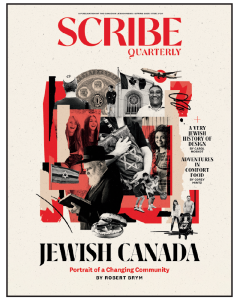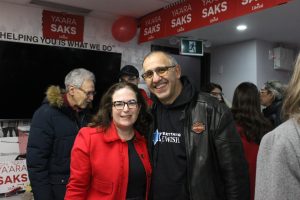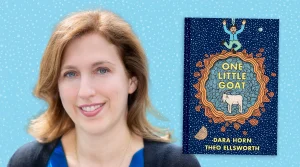Seventy-five years after the liberation of Auschwitz, the 27th of January remains a day to remember, to commemorate and to honour the memories of those who perished during the darkest days of history. The date, designated by the United Nations General Assembly as International Holocaust Remembrance Day, continues to be an important reminder, especially as global anti-Semitism is once again on the rise.
At a ceremony hosted by Library and Archives Canada, in partnership with Centre for Israel and Jewish Affairs (CIJA), Jewish Federation of Ottawa, the Centre for Holocaust Education and Scholarship and the Wallenberg Citation Initiative, Holocaust survivor Pinchas Gutter shared his personal story of survival against all odds, losing his parents and twin sister in the horrors of the death camps.
Only seven years old when the war broke out, Gutter and his family left their home in Lodz for what they believed would be the safety of Warsaw where they spent three and a half years in the Warsaw Ghetto. From there, during the Ghetto uprising, he and his family were deported to Majdanek where both parents and his twin sister were murdered by the Nazis.
Recounting his story – the twists and turns and various horrors – and eventual liberation, Gutter said he feels he speaks for all Holocaust survivors, “each one having his or her own story to tell.” In recent years, he has felt the urgency of telling the stories to the world as fewer and fewer survivors are able to do so and soon there will no longer be anyone alive to share their stories. For this reason, he has recently become the very first person to participate in a ground-breaking new project using three-dimensional, fully interactive displays of Holocaust survivors telling their stories. The project, created by University of Southern California’s Institute for Creative Technologies and Conscience Display, known as “New Dimensions in Testimony” will enable people to interact with the survivors in museums and classrooms around the world, even after they are gone.
“Due to the utter dedication of the team of technologists, there will be holographic images of survivors even after they are no longer alive,” Gutter said. “As long as I have breath in my body and legs to carry me, I intend to share my story with anyone who will listen to me,” he said.
Martin Sampson, vice-president of communications for CIJA, told the audience that although he is not Jewish, his job has been “the most profoundly rewarding and enriching experience of my entire professional life.” Addressing his comments to the non-Jews present, he said “One of the things that link us is the deeply held belief that anti-Semitism is not just a Jewish problem … We have real skin in this game and we have to fight it at every opportunity.”
Violinist Ralitsa Tcholakova provided musical interludes throughout the ceremony which concluded with the recitation of Kaddish by Rabbi Eytan Kenter of Kehillat Beth Israel. The event took place at Library and Archives Canada and was attended by members of both the Jewish and general community, including organizational leaders and politicians. Jon Fraser, MPP for Ottawa South, brought greetings and expressed solidarity.
As part of the international “We Remember” initiative, Martin Sampson asked everyone to hold the “We Remember” signs and participate in a group photo to be shared widely on social media.







